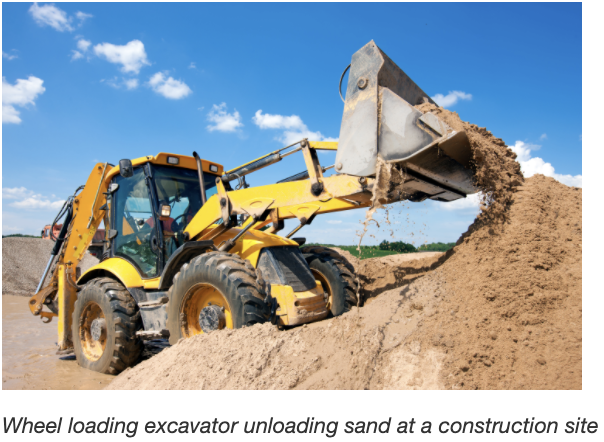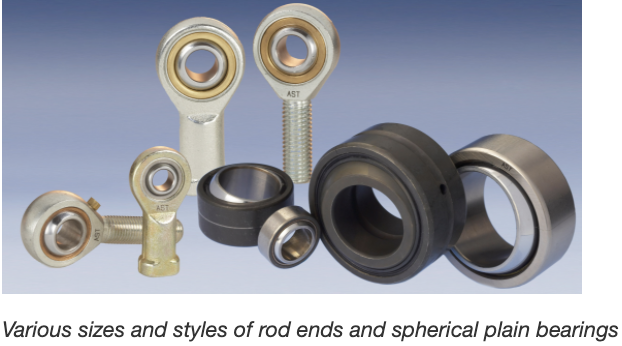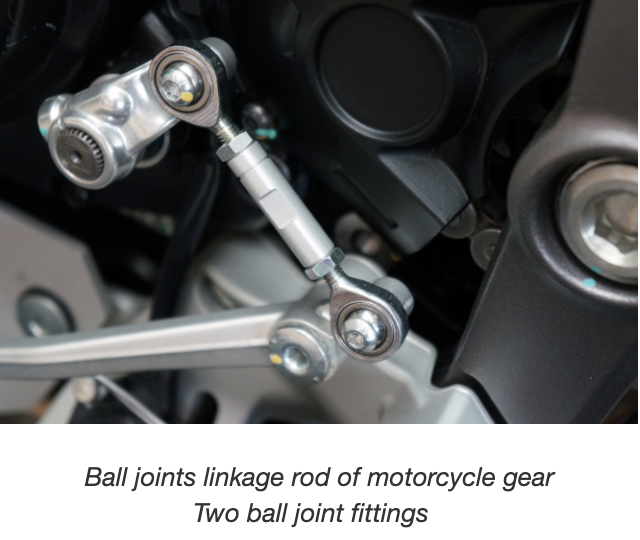Radial spherical plain bearings play a key role in off-highway equipment and vehicles. In this feature article, AST examines their varieties, applications, and how they work.

Original equipment manufacturers (OEM) of off-highway equipment and vehicles are continuously looking for new ways to apply technology into their designs, both new and old -- anything that will give their products an edge in productivity, payloads, and efficiency. The machines and vehicles they produce must endure extreme environments, demanding operating conditions, and heavy loads.
Reliability and ease of maintenance are paramount; repairing equipment on-site is costly, and often almost impossible. However, many designs are built upon tried-and-true platforms that incorporate drivetrains, suspensions, steering linkages, torsion bars, connecting rods, articulated joints, heavy duty linkage pivots, and hydraulic cylinders. All of these applications have something important in common: they use radial spherical plain bearings and rod ends. Engineers have yet to develop bearings that better accommodate the combinations of movements and heavy loads these vehicles and equipment encounter, with reliability and cost-effectiveness.
Here’s what you should know about these relatively simple and extremely tough bearings found in most off highway applications.
How they work
Radial spherical plain bearings have an inner ring with a sphered convex outside surface, and an outer ring with a correspondingly sphered (but concave) inside-sliding contact surface. The two general styles relate to the manufacturing method. Swaged style bearings are made by “swaging,” or forming, the outer ring over the inner ring (or ball). Fractured style bearings have an outer ring that is split, or fractured, in one position to facilitate assembly of the rings during manufacturing.
The bearings can be comprised of different sliding contact surface combinations, i.e. the sliding surfaces of inner and outer rings are made from different materials. Some combinations require maintenance (such as steel-on-steel), while others do not.

Comparison to rod ends
Rod ends consist of an eye-shaped head with integral shank, forming a housing and one of three options: a standard spherical plain bearing, a spherical plain bearing inner ring, or a spherical plain bearing inner ring with a sliding layer between the bore of the head and the inner ring. As a rule, rod ends are available with left or right-hand female or male threads. Rod ends can have the sliding contact surface combinations steel-on-steel, steel-on-bronze, steel-on-PTFE composite material, or steel-on-PTFE fabric.

Rod ends and spherical plain bearings share common design principles and function in the same manner, designed to handle radial loads under misalignment. Rod ends are more common in linkages and connecting rods due to their ease of mounting and adjustment. They can be selected with sliding contact surface combinations that render them maintenance-free, or the steel-on-steel style can accommodate a grease fitting, allowing for regular re-lubrication.
Spherical plain bearings, however -- due to their construction and internal geometry -- can handle heavier radial loads under misalignment than rod ends. They accommodate misalignment between the housing and shaft, as well as oscillating movements at slow speeds. While these bearings can handle a small amount of axial load, they should be used where the load is primarily radial.
In the next installment of this series, AST engineers address varieties and use cases for radial spherical plain bearings in Simple, but Tough – Part 2. Coming September 3, 2021.

